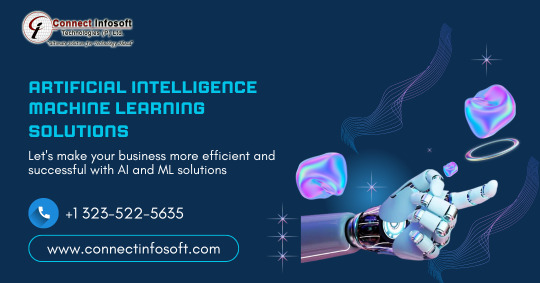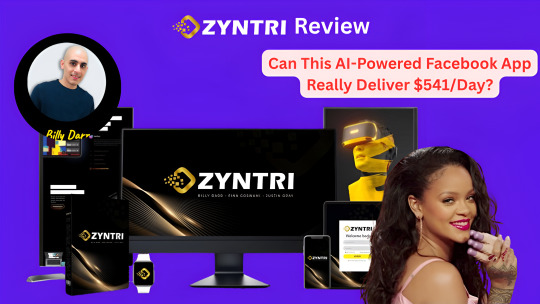#AIapplications
Explore tagged Tumblr posts
Text

VidintelAi Review: Is This the Best AI for Video Transcription & Content Creation?
Introduction: VidintelAi Review
VidintelAi is an intelligent tool that assists you to generate any video into revenue. Think of it as your own digital assistant who watches, listens and speaks about videos on your behalf. All you do is copy-paste a video link and VidintelAi provides you with:
Viral hooks
Transcripts
Quotes
FAQs
Client-ready content
You don’t need to watch the video. The AI does all the work in seconds.
Overview: VidintelAi Review
Vendor: Loveneet Rajora et al
Product: VidintelAI
Launch Date: 2025-Jun-13
Front-End Price: $17
Discount Code: VIDINTELAIVIP, Instant $3 Discount!
Niche: Affiliate Marketing, Artificial Intelligence, Aivideo, Video
Guarantee: 30-days money-back guarantee
Recommendation: Highly recommended
Support: Check
Contact Info: Check
What Is Vidintel AI?
Vidintel AI is the intelligent application that stays on top of your videos by watching and comprehending them. It becomes the first AI agent in the world, which is able to transform any video into useful content within 25 seconds. You do not need to watch long video materials and make notes. Simply provide it with a link; whether it be YouTube, a Zoom meeting, or a webinar, and the app does the rest.
It provides you with brief summaries, quotes, frequently asked questions and complete reports in minimum time. It is as good as having an assistant that does not tire and one that works extremely fast.
No technical abilities are required. There is nothing and You do not have to prepare. No hidden expenses as well. Work with the app is easier and quicker.
Fancy creating social media posts, clickable chapters or even a chatbot in other languages? Vidintel AI Studio may assist. It transforms simple videos into ready to use content that you can either post or sell. This tool will allow you to save time and earn more in case you produce content on the Internet.
#VidintelAi#VideoTranscription#ContentCreation#AIReview#ArtificialIntelligence#VideoEditing#TranscriptionTools#ContentMarketing#DigitalMarketing#TechReview#AIForContent#VideoProduction#TranscriptionServices#ContentStrategy#SocialMediaMarketing#VideoContent#AIApplications#ProductivityTools#CreativeAI#TechInnovation#VideoAutomation#ContentCreators#AIInBusiness
1 note
·
View note
Text

Unlock the full potential of AI tools like ChatGPT with this beginner-friendly guide to prompt engineering! 🎯 Learn how to craft effective prompts, avoid common mistakes, and maximize AI performance for real-world applications. Perfect for developers, students, and AI enthusiasts looking to elevate their skills and achieve success with AI.
✨ What’s Inside:
What is prompt engineering?
Tips for writing impactful prompts
Real-world examples and best practices
Ready to master AI? Dive into the full guide here 👉 Read Now
#PromptEngineering#AI#ArtificialIntelligence#TechTips#AIForBeginners#MachineLearning#AIApplications#TechSkills#Innovation#LearnAI
2 notes
·
View notes
Text
🚀 The Future of AI is Here!
💻 Beyond ChatGPT, artificial intelligence has endless possibilities. Explore the vast horizons of AI and discover how it's changing the world!
💡Learn More: www.bootcamp.lejhro.com/blogs/ai-is-more-than-chat-gpt
💡The latest scoop, straight to your mailbox : http://surl.li/omuvuv
#AI#ArtificialIntelligence#MachineLearning#FutureOfTech#Technology#Innovation#DigitalTransformation#FutureOfWork#AIApplications
2 notes
·
View notes
Text



Interesting when you work with the glass within an image, trying to get a higher level of transparency and reflection in the image, it can be kind of cool.

I was going for this Japanese animation style of the late 1990s AI did a pretty good job of protecting that.
#artificialintelligence#roboticvision#digitalfuture#aiillustration#cognitivecomputing#automation#techrevolution#intelligentsystems#aiprogramming#augmentedreality#virtualreality#aiapplications#techdevelopmentai#midjourneyart#midjourneyai#ai#aiart#aiartcommunity#aiartwork#aiartists#aiwork#digitalart#aigeneratedart#aidailytheme
8 notes
·
View notes
Text
The Man Who Destroyed Merrill Lynch | Stan O'Neal
The Man Who Destroyed Merrill Lynch | Stan O'Neal https://www.youtube.com/watch?v=tuAQ--1cPPc Born on October 7, 1951, in Roanoke, Alabama, O'Neal grew up in the small town of Wedowee. This was a time and place where opportunities for African Americans were scarce. His family lived on his grandfather's farm, where O'Neal spent his early years picking cotton and corn. His grandfather, born into slavery, was also the one who built the schoolhouse that young Stan attended. Despite these challenges, O'Neal showed an early aptitude for academics. His father, Earnest O'Neal, worked hard to provide for his family, eventually moving them to Atlanta, Georgia, when Stan was twelve. This offered the family a chance at a better life. Earnest secured a job at a newly integrated General Motors (GM) assembly plant, a position that came with the promise of stability and upward mobility. Stan himself took up a job at the same plant, working the night shift while attending the newly integrated West Fulton High School. At West Fulton High, O'Neal excelled in his studies, which caught the attention of General Motors. Recognizing his potential, GM offered him a spot in their cooperative education program at the General Motors Institute (now Kettering University). This program allowed O'Neal to alternate between studying engineering and industrial administration and working at the GM plant. This hands-on experience was invaluable and set the stage for his future success. He graduated in 1974 with a degree in Industrial Administration, placing in the top 20% of his class. O'Neal's next step was Harvard Business School. It was here that he began to understand the broader implications of his work and the opportunities that lay ahead. He graduated with an MBA in 1978, again with honors. ✅ Stay Connected to Us - http://www.youtube.com/@UC8j1vtxBoUVRmJ-G2at4-bA ====================================== ✅ Welcome to Contrarian Perspectives. We're passionate about uncovering the most captivating stories about businessmen and women who have shaped or are shaping the world around us today. Our mission is to enlighten, inspire, and inform our audience. Thank you for your support. ====================================== ✅ Other Videos You Might Be Interested In Watching: 👉 The Man Behind America's 40-Hour Work Week | Henry Ford https://youtu.be/BAL7W5lPaNc ====================================== #stano'neal #merrilllynch #bankofamerica #mortgagebackedsecurities Disclaimer: We do not accept any liability for any loss or damage incurred from you acting or not acting as a result of reading our publications. We acknowledge that you use the information we provide at your own risk. Do your research. Copyright Notice: This video and our YouTube channel contain copyrighted music and images. Any public, media, and other business usage is subject to a business license. Unauthorized usage and publications are prohibited. © Contrarian Perspectives via Contrarian Perspectives https://www.youtube.com/channel/UC8j1vtxBoUVRmJ-G2at4-bA August 21, 2024 at 03:11AM
#techwonders#beyondimaginationai#futuretechmagic#aiapplications#mindblowntech#innovativeai#ai#productivity#aitools#timemanagement
2 notes
·
View notes
Text
youtube
🔥 Unlock the Power of Generative AI Join the Revolution! 💪
#GenerativeAI#GenerativeAIforBeginners#MachineLearning#ChatGPT#DeepLearning#FutureTrends#AIApplications#AIcourse#art#artists on tumblr#branding#artwork#animation#accounting#architecture#machine learning#artificial intelligence#youtube#Youtube
2 notes
·
View notes
Text

Artificial Intelligence and Machine Learning Solutions by Connect Infosoft Technologies
We offer customizable AI and ML solutions tailored to meet the specific requirements of each client, ensuring maximum impact and ROI.
Let's make your business more efficient and successful with AI and ML solutions
#connectinfosoft#AI#ML#ArtificialIntelligence#MachineLearning#AIdevelopment#MLdevelopment#AIservices#MLservices#AIapplications#MLapplications#AIdeveloper#MLdeveloper#AIDevelopmentCompany#MLDevelopmentCompany#AIexpert#MLexpert#AIteam#MLteam#AItechnology#MLtechnology#AIinnovation#MLinnovation#AIsoftware#MLsoftware#AIsolutions#MLsolutions#AIandML#ArtificialIntelligenceDevelopment#MachineLearningDevelopment
2 notes
·
View notes
Text
Integrating AI in Industry Apps: Real-World Use Cases
Artificial Intelligence (AI) is no longer just a buzzword — it’s a powerful tool transforming how industries operate. While many businesses recognize AI’s potential, understanding how to apply it in real-world scenarios is often the missing piece. This blog explores practical AI integrations across sectors like healthcare, fintech, and transport to help you envision what’s possible and where to start.
0 notes
Text

🧠 Zyntri Review: Can This AI Facebook App Really Make You $541/Day?
🔍 Introduction: Zyntri Review
In today’s fast-paced world of online marketing, smart tools are key. One tool getting lots of attention is Zyntri. This app uses AI to turn your Facebook™ account into a simple income source. But does it really work?
This review will look at what Zyntri does, its features, benefits, and downsides—so you can decide if it’s right for you.
📦 Overview: Zyntri Review
Creator: Billy Darr
Product Name: Zyntri
Launch Date: May 27, 2025
Front-End Price: $17
Discount: Save $5 instantly
Niche: Affiliate Marketing, AI Apps, Facebook Marketing
Refund Policy: 180-Days Money-Back Guarantee
Support: Check
Our Rating: ★★★★★ (Highly Recommended)
🤖 What Is Zyntri?
Zyntri is a smart app powered by ChatGPT 4.0. It helps you grow your Facebook audience and make sales on autopilot. You don’t need any tech skills or marketing experience. Zyntri does most of the work for you.
🌟 Features: Zyntri Review
AI Automation Zyntri creates posts, finds your audience, and helps you connect. The AI writes content that people like and want to click on.
Easy to Use No experience? No problem. Zyntri has a clean dashboard and simple setup steps. Anyone can use it.
Works in Any Niche Pick from many topics—health, travel, business, etc. You can go after markets that interest you.
Real-Time Stats See how your campaigns are doing. You’ll know your clicks, sales, and earnings as they happen.
Done-for-You Campaigns Don’t want to build a campaign? Use one that’s already set up. Just click and launch.
24/7 Support Got a problem? Help is always ready, day or night.
#ZyntriReview#AIPoweredApps#FacebookMarketing#MakeMoneyOnline#PassiveIncome#DigitalMarketing#SocialMediaTools#OnlineBusiness#EntrepreneurTips#AIApplications#FinancialFreedom#WorkFromHome#SideHustle#TechReviews#IncomePotential#BusinessGrowth#MarketingStrategies#AIInBusiness#OnlineIncome#ZyntriApp#ReviewAndEarn#SmartInvesting#TechForProfit
1 note
·
View note
Text
instagram
#ArtificialIntelligence#AIinHealthcare#AIinFinance#AIinEducation#AIApplications#SupportInnovation#Instagram
0 notes
Text
Top 10 Artificial Intelligence Tools
Curious about the tools behind today’s smartest online businesses?
Check out the Top 10 Artificial Intelligence Tools that can help you work faster, market smarter, and scale like never before! ⚡🧠
Peek inside the toolkit now! 👉
📩 Subscribe and get your FREE Profit Masterclass eBook to start using tech to your advantage! 📘✨ 👉
Work smarter. Grow faster. 🚀
💬 What AI tools have had the biggest impact on your work? I’d love to hear your thoughts—drop a comment below!
0 notes
Text
Shadow Love.

"Its not that darkness shouldn't have a place, but when you project your thoughts and ideas leading to the pain of others, creating more unnecessary hurt, that is not darkness. the ideas of dark and light are just concepts, and why we hold those ideas are just projections of our past and our experiences. Yet the dark is not the idea of being evil or hurtful, but the shadow side of the coin. Remember shadows may be dark but they don't hurt any one, and can be rather pleasant in the heat of the sun."

" for a Rose may draw blood, its most likely you have baby fingers"
#algorithm#airesearch#aiprogramming#augmentedreality#virtualreality#aiapplications#techdevelopmentai#midjourneyart#midjourneyai#ai#aiart#aiartcommunity#aiartwork#aiartists#aiwork#digitalart#aigeneratedart#aidailytheme#aigenerated#aigeneratedimages#aidailychallenge#digitalcreator#aiillustration
3 notes
·
View notes
Text
Barbie AI Selfie Generator Tutorial
youtube
#techwonders#beyondimaginationai#futuretechmagic#aiapplications#mindblowntech#innovativeai#ai#productivity#aitools#efficiency#timemanagement#personalassistant#techexaminer#techexaminerintelligence#techexamineraivshumans#humanintelligence#aivshuman#futureofai#ethicalai#Youtube
2 notes
·
View notes
Text
Affective Computing Market: Impact of Technology on User Experience
The global affective computing market was valued at USD 62.53 billion in 2023 and is expected to grow to USD 388.28 billion by 2030, with a CAGR of 30.6% from 2024 to 2030. The rapid advancements in artificial intelligence (AI), machine learning (ML), and sensor technologies, along with a heightened focus on enhancing user experience, have driven market growth. Additionally, the increasing demand for sentiment analysis and emotional intelligence in customer service and marketing has prompted businesses to invest in affective computing solutions.
Various industries, including media and entertainment, advertising services, healthcare and life sciences, and IT & telecom, have begun adopting affective computing solutions to create more personalized user experiences. As technology continues to innovate, other sectors are anticipated to utilize affective computing techniques during the forecast period.
According to a report from the International Federation of Robotics, the demand for service robots is projected to surge in the near future, especially in critical fields like transportation, logistics, healthcare, and agriculture. Service robots play a significant role in hospitality, medical procedures, and other services where direct human interaction is common. By integrating affective computing solutions, these robots can enhance service operability and improve the user experience. Furthermore, rapid advancements in audio and visual sensor technologies have enabled a more personalized user experience in these service sectors.
Key Market Trends & Insights
• North America led the market with a revenue share of 40.1% in 2023. The region hosts numerous innovative and technologically advanced companies, including Affectiva, NuraLogix Corporation, and IBM, which significantly contribute to the affective computing industry.
• In 2023, the U.S. represented the largest share of the regional market. This is supported by the presence of various companies that have implemented affective computing solutions to enhance their business and maintain their competitive edge.
• In terms of components, hardware components captured the largest market share in 2023, driven by the rising demand for specialized emotion detection and analysis devices.
• Regarding end use, healthcare and life sciences held the largest market share in 2023. This is due to the increasing acknowledgment of the vital role emotional intelligence plays in patient care, diagnosis, doctor-patient communication, and treatment outcomes.
Order a free sample PDF of the Affective Computing Market Intelligence Study, published by Grand View Research.
Market Size & Forecast
• 2023 Market Size: USD 62.53 Billion • 2030 Projected Market Size: USD 388.28 Billion • CAGR (2024-2030): 30.6% • North America: Largest market in 2023 • Asia Pacific: Fastest growing market
Key Companies & Market Share Insights
Some prominent companies in the affective computing market include Affectiva, NuraLogix Corporation, and Cognitec Systems GmbH, among others.
• Affectiva is a software and AI solutions company that boasts a comprehensive dataset from over 90 countries, enabling it to develop precise deep learning algorithms. It offers various solutions, including ad testing, entertainment content testing through Emotion AI, qualitative research via its cloud-based service, the Emotion SDK, in-cabin sensing AI for the automotive industry, and behavioral research with iMotions solutions. In 2021, Affectiva was acquired by Smart Eye, a Swedish company specializing in AI technology solutions.
• NuraLogix Corporation is a Canadian company focused on affective AI solutions. It is recognized for its Anura application, which allows contactless health and wellness monitoring by detecting vital health signs from a 30-second facial video. This capability is made possible by its Transdermal Optical Imaging (TOI) technology, which captures facial blood flow information using a video camera. Additionally, the company provides a cloud-based platform called DeepAffex that employs machine learning models for health monitoring. NuraLogix is actively expanding the geographical reach of its Anura platform, having showcased it for the first time at the World IT Show 2024 in South Korea.
Key Players
• Affectiva • Apple Inc. • Cognitec Systems GmbH • Google LLC • IBM • Microsoft • NuraLogix Corporation • Qualcomm Technologies, Inc. • Realeyes • Sony Corporation
Explore Horizon Databook – The world's most expansive market intelligence platform developed by Grand View Research.
Conclusion
growth is driven by advancements in AI, machine learning, and sensor technologies, along with a rising demand for sentiment analysis in customer service and marketing. Various sectors, including media, healthcare, and IT, are increasingly adopting affective computing solutions for personalized The global affective computing market user experiences. Additionally, the demand for service robots is expected to rise in areas like transportation and healthcare, where integrating affective computing can enhance service quality and user satisfaction.
#AffectiveComputing#EmotionalAI#EmotionRecognition#AITrends#HumanComputerInteraction#AIApplications#EmotionalIntelligence
0 notes
Text
🎯 Building Smarter AI Agents: What’s Under the Hood?
At CIZO, we’re often asked — “What frameworks do you use to build intelligent AI agents?” Here’s a quick breakdown from our recent team discussion:
Core Frameworks We Use: ✅ TensorFlow & PyTorch – for deep learning capabilities ✅ OpenAI Gym – for reinforcement learning ✅ LangChain – to develop conversational agents ✅ Google Cloud AI & Azure AI – for scalable, cloud-based solutions
Real-World Application: In our RECOVAPRO app, we used TensorFlow to train personalized wellness models — offering users AI-driven routines tailored to their lifestyle and recovery goals.
📈 The right tools aren’t just about performance. They make your AI agents smarter, scalable, and more responsive to real-world needs.
Let’s build AI that works for people — not just data.
💬 Curious about how we apply these frameworks in different industries? Let’s connect! - https://cizotech.com/
#innovation#cizotechnology#techinnovation#ios#mobileappdevelopment#appdevelopment#iosapp#app developers#mobileapps#ai#aiframeworks#deeplearning#tensorflow#pytorch#openai#cloudai#aiapplications
0 notes
Text

🤖 Power the Future – Premium AI Domain Names!
Step into the world of innovation with domain names crafted for artificial intelligence startups, machine learning platforms, robotics, automation tools, and tech ventures. These AI-focused domains deliver authority, clarity, and cutting-edge appeal—perfect for branding your next big idea in tech.
💡 Futuristic, memorable, and brand-ready 💡 Ideal for SaaS, AI research, tools, apps, and consulting 💡 Instantly positions you as a leader in artificial intelligence
#AIDomains#ArtificialIntelligence#MachineLearning#DeepLearning#Robotics#AITech#NeuralNetworks#AIStartup#Automation#AIPlatform#DataScience#AITools#AIBusiness#AIResearch#SmartTech#AIApplications#AIEthics#AIInnovation#TechStartup#FutureTech#AIModel#CognitiveComputing#AIConsulting#AIinHealthcare#GenerativeAI
0 notes